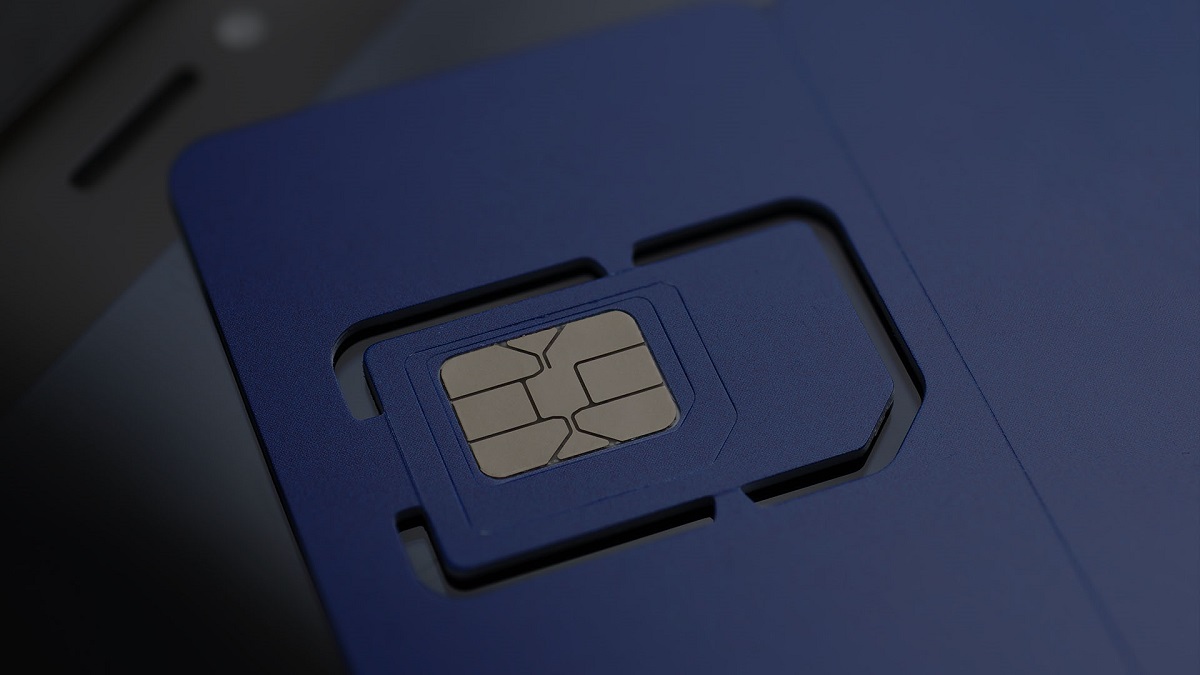From Basic Connectivity to Seamless Integration: The Evolution of IOT Sim Cards

Welcome to the world of IoT, where everyday objects are becoming smarter and more connected than ever before. From smart homes to wearable devices, our lives are increasingly intertwined with technology. But have you ever wondered how these devices stay connected? The answer lies in the evolution of IoT SIM cards – those tiny chips that enable seamless integration between devices and networks. In this blog post, we will take a deep dive into the journey of IoT SIM cards – from their humble beginnings as mere connectivity tools to their current role as facilitators of seamless integration. So buckle up and get ready to explore the fascinating transformation that has revolutionized the way we connect and communicate in this interconnected world!
Introduction to IOT SIM Cards
In the world of the Internet of Things (IOT), connectivity is key. The ability to connect various devices and machines together in a seamless and efficient manner is what drives the growth and advancement of this technology. And at the core of this connectivity lies an important component – IOT SIM cards.
IOT SIM cards, also known as M2M (Machine-to-Machine) SIM cards, are specialized subscriber identity modules that enable devices to communicate with each other over cellular networks. These SIM cards are specifically designed for use in IOT devices, providing them with a unique identifier and enabling them to access data networks for communication.
Unlike traditional SIM cards used in smartphones, IOT SIM cards are tailored to meet the specific needs of connected devices. They offer a range of features and capabilities that make them ideal for use in IOT applications.
Let’s take a closer look at some key aspects of these sim cards:
- Size and form factor: One major difference between traditional SIM cards and IOT SIM cards is their size and form factor. While regular SIMs are relatively large in size, around 25x15mm, IOT SIMs come in much smaller sizes ranging from 8x6mm (2FF) to 6x5mm (4FF). This makes them suitable for use in small-sized or compact devices such as wearables, sensors, trackers etc.
- Robustness: Another crucial aspect that sets apart IOT sim cards from regular SIMs is their durability and robustness. IOT devices are often deployed in harsh or remote environments, and the sim cards used in them must be able to withstand extreme conditions such as extreme temperatures, moisture, and vibration. IOT SIM cards are designed to be more rugged and resilient, ensuring reliable connectivity even in challenging environments.
- Longevity: In traditional mobile phones, SIM cards are frequently swapped out when users switch carriers or upgrade their devices. However, this is not a feasible option for IOT devices that may be deployed for extended periods of time without any human intervention. Therefore, IOT SIMs are designed to have a longer lifespan than regular SIMs, ranging from 5-10 years or more.
- Remote management: One of the key features of IOT SIM cards is their ability to be remotely managed. This means that network operators can remotely activate or deactivate the sim card, change its settings, monitor data usage, and troubleshoot issues without physically accessing the device. This is especially useful for large-scale deployments of IOT devices where manual management would be time-consuming and costly.
The Evolution of Connectivity: From Basic to Advanced
The world of technology is constantly evolving, and one of the most significant changes we have seen in recent years is the evolution of connectivity. From basic to advanced, the way we connect with each other and our devices has undergone a major transformation. In this section, we will take a closer look at how connectivity has evolved over time, from its humble beginnings to the seamless integration we see today.
Basic Connectivity: The Beginning
Before the advent of modern technologies like smartphones and the internet, basic forms of communication were limited to landline telephones and postal services. These methods were slow, inefficient, and often costly. As technology progressed, so did our means of communication.
With the introduction of mobile phones in the 1980s, people were no longer bound by cords or physical locations. This first step towards wireless connectivity was revolutionary at that time. However, it still required users to carry around bulky devices with limited capabilities.
The Rise of Internet Connectivity
As computers became more accessible and affordable in the 1990s, internet connectivity emerged as a game-changer for communication. Suddenly, people could access information and communicate with others from anywhere in the world through email and instant messaging platforms. This marked a significant shift towards a more connected world.
Mobile phones also continued to evolve during this time period with features such as SMS text messaging being introduced. This further enhanced communication capabilities as people could now send short messages quickly without having to make a call.
The Emergence of Smartphones
In 2007, Apple released the first iPhone, which marked a significant turning point in the evolution of connectivity. The iPhone was the first smartphone to offer a full touch-screen interface and access to the internet, making it possible to browse websites, send emails, and use various apps all from one device.
Following this, other companies started developing their own smartphones with similar capabilities, such as Google’s Android operating system. These devices allowed for even more advanced forms of communication and connectivity, including video calls and social media platforms.
The Internet of Things (IoT)
As technology continued to advance, we saw the rise of the Internet of Things (IoT). This refers to the network of physical devices embedded with sensors, software, and connectivity that allows them to collect and exchange data. IoT devices include smart home appliances, wearables like fitness trackers and smartwatches, and even cars with built-in internet connectivity.
The IoT has revolutionized how we interact with our surroundings. For example, through a smartphone app, you can now control your home’s temperature or monitor your heart rate from your wristwatch. This level of connectivity has made our lives more convenient and efficient.
5G Connectivity
The latest development in connectivity is 5G networks. The fifth-generation cellular network promises to provide faster internet speeds, lower latency, and more reliable connections. It will enable the use of even more advanced technologies such as augmented reality and autonomous vehicles.
With 5G, we can expect to see a significant increase in connected devices and the capabilities of these devices. This has the potential to change how we live, work, and communicate in ways we couldn’t have imagined before.
The Future of Connectivity
It’s clear that connectivity has come a long way from its basic beginnings. As technology continues to advance at an increasingly rapid pace, it’s challenging to predict what the future holds for connectivity. However, one thing is certain: connectivity will continue to evolve and play a crucial role in our daily lives.
Advancements in IOT Sim Card Technology
The Internet of Things (IoT) has revolutionized the way we live and work, connecting everyday objects to the internet and allowing them to communicate with each other. One crucial component that enables this connectivity is the IoT sim card. This small chip is responsible for providing cellular network connectivity to various devices, ranging from smart home appliances to industrial equipment.
Over the years, there have been significant advancements in IoT sim card technology, making it more efficient and reliable. In this section, we will explore some of these advancements and how they have contributed to the evolution of IoT sim cards.
1. Smaller Size and Improved Form Factor
One of the most notable advancements in IoT sim card technology is its size reduction. With traditional SIM cards becoming smaller over time, manufacturers have now developed even smaller options specifically designed for IoT devices. These tiny SIMs are known as embedded SIMs or eSIMs, which can be directly integrated into a device’s circuit board.
2. Better Network Coverage
Another major advancement in IoT sim card technology is its improved network coverage. Traditional SIM cards were designed primarily for mobile phones and could only connect to one specific network at a time. However, IoT sim cards are equipped with multiple IMSIs (International Mobile Subscriber Identity), allowing them to switch between different networks based on signal strength automatically.
This feature not only ensures better connectivity but also reduces downtime due to poor network coverage. In addition, some IoT sim cards also have built-in roaming capabilities, allowing devices to connect to different networks in different countries without any manual intervention.
3. Enhanced Security Features
Security is a critical concern for IoT devices, as they are often connected to sensitive data and networks. To address this issue, IoT sim cards now come with advanced security features such as encryption and authentication protocols. These features ensure that only authorized devices can access the network, preventing unauthorized access and potential cyber-attacks.
4. Over-the-Air (OTA) Provisioning
Traditionally, SIM cards needed to be physically inserted into a device and programmed with the necessary network information before it could connect to a network. However, with OTA provisioning, these tasks can be done remotely using wireless communication. This not only saves time and cost but also enables easier management of large-scale IoT deployments.
5. Cost-Efficiency
IoT sim card technology has also become more cost-efficient over the years. With advancements in manufacturing processes and materials used, the production cost of these sim cards has reduced significantly, making them more affordable for businesses looking to deploy large-scale IoT solutions.
6. More Customization Options
As the demand for IoT devices grows, so does the need for more customization options for sim cards. To cater to this demand, manufacturers now offer various options such as data-only SIMs, voice and data SIMs, and multi-network SIMs. This allows businesses to choose the most suitable option for their specific IoT use case, ensuring optimal performance and cost-effectiveness.
The advancements in IoT sim card technology have played a crucial role in the growth and adoption of IoT devices.
Benefits of IOT Sim Cards for Businesses and Consumers
IOT sim cards, also known as IoT (Internet of Things) sim cards, are specialized SIM cards designed specifically for the rapidly growing network of interconnected devices and machines that make up the Internet of Things. These sim cards provide a unique set of benefits for both businesses and consumers, making them an essential component in the evolution of IOT.
In this section, we will explore some of the key benefits that IOT sim cards offer to businesses and consumers alike.
1. Enhanced Connectivity:
One of the primary benefits of IOT sim cards is their ability to provide enhanced connectivity. Unlike traditional SIM cards which are primarily used for mobile phones, IOT sim cards are designed to connect a wide range of devices such as sensors, smart meters, and other industrial equipment. This means that these devices can be connected to the internet from virtually anywhere in the world with cellular coverage.
2. Cost-Effective Solution:
For businesses looking to deploy large-scale IOT solutions, cost-effectiveness is crucial. With traditional SIM card plans being geared towards voice and data usage on mobile phones, they often do not meet the specific needs of IOT devices. In contrast, many IOT sim card providers offer flexible pricing plans tailored for machine-to-machine communication at much lower costs than traditional SIM card plans. This makes it more feasible for businesses to connect multiple devices without breaking their budget.
3. Global Coverage:
Another significant advantage offered by IOT sim cards is global coverage. As mentioned earlier, these specialized SIM cards have the ability to connect devices to the internet from virtually anywhere in the world, as long as there is cellular coverage. This means that businesses with operations in multiple countries can seamlessly connect their devices and collect data from various locations.
4. Secure Connectivity:
IOT sim cards also offer secure connectivity, which is crucial for businesses that deal with sensitive data. These SIM cards have built-in security features such as encryption and authentication protocols, making it difficult for hackers to intercept data transmissions between devices and servers. This ensures that valuable data remains safe and secure.
5. Real-Time Data Collection:
With IOT sim cards, businesses can collect real-time data from their connected devices, allowing them to make informed decisions quickly. This is particularly beneficial for industries such as manufacturing, logistics, and healthcare, where real-time data plays a critical role in optimizing processes and improving efficiency.
6. Easy to Manage:
Managing traditional SIM cards for large-scale IOT deployments can be challenging and time-consuming. However, many IOT sim card providers offer user-friendly platforms that allow businesses to manage their connected devices easily. These platforms provide features such as remote device activation/deactivation, monitoring of data usage, and setting limits on data consumption.
7. Flexibility:
Finally, IOT sim cards offer flexibility, allowing businesses to scale their IOT deployments as needed. With traditional SIM cards, businesses have to purchase a separate plan for each device, which can be costly and inflexible. IOT sim cards, on the other hand, can be easily swapped between devices and reprogrammed as needed, making it easier for businesses to adjust their connectivity needs.
IOT sim cards offer a wide range of benefits for both businesses and consumers. They provide enhanced connectivity, cost-effectiveness, global coverage, secure connectivity, real-time data collection, easy management, and flexibility.
Conclusion:
In conclusion, it is evident that IOT sim cards are changing the game in various ways. Their ability to provide reliable connectivity, global coverage, cost-effectiveness, advanced security, and compatibility with eSIM technology makes them an indispensable component of the IOT ecosystem. As more devices become connected to the internet, the demand for IOT sim cards will only continue to increase, further driving innovation and transforming industries across the board.
![]()






